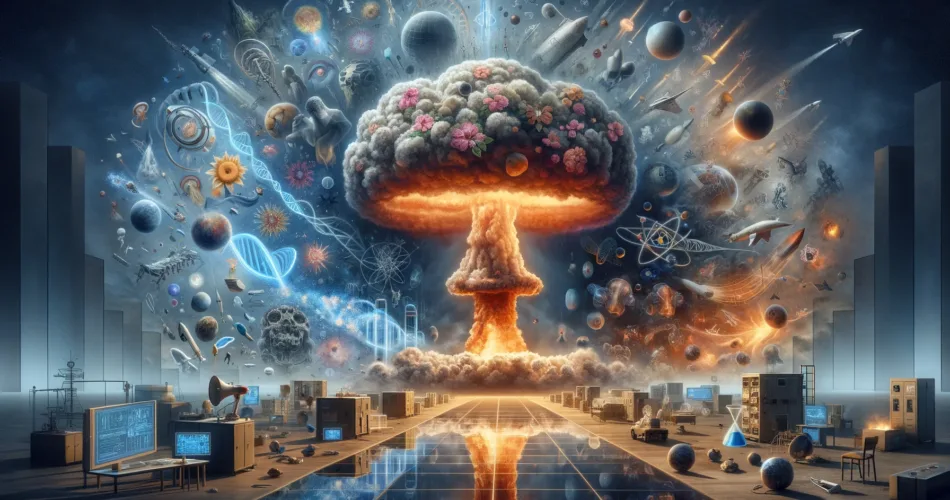In the shadow of nuclear warfare’s devastating potential lies a paradoxically rich vein of scientific discovery. The detonation of nuclear weapons, a symbol of humanity’s most destructive capabilities, has inadvertently led to advancements in various fields of science. This article delves into the unexpected legacy of nuclear tests, exploring how, from the echoes of explosions, we’ve gleaned insights that benefit humanity in ways once unimaginable.
The Genesis of Nuclear Testing
The Dawn of the Atomic Age
The narrative begins in the deserts of New Mexico, where the detonation of the first atomic bomb not only marked the beginning of the nuclear age but also set the stage for unforeseen scientific exploration. The Trinity test, while primarily a display of military might, produced Trinitite—a unique glass that later offered scientists clues about the formation of the moon, linking terrestrial nuclear explosions to celestial phenomena.
Art, Fat, and Carbon Dating
Unmasking Forgeries in the Art World
As nuclear tests proliferated, so did the atmospheric concentration of Carbon-14, a radioactive isotope. This fallout became a tool for forensic art detectives to authenticate works of art, distinguishing genuine masterpieces from modern forgeries. Through radiocarbon dating, scientists could now pinpoint the age of canvas and paint, safeguarding the integrity of historical art collections.
The Science of Obesity and Aging
Similarly, the unexpected abundance of Carbon-14 found its way into the human body, embedding itself in our very cells. This serendipitous occurrence allowed researchers like Kirsty Spalding to unravel mysteries surrounding fat cell turnover and obesity, offering new perspectives on weight loss and the difficulty of maintaining it. Beyond obesity, Carbon-14 dating has illuminated the dynamics of aging and disease progression, offering a molecular clock within our cells that chronicles their lifespan.
The Global Surveillance Network
Listening for Silence, Discovering the World
In response to the Comprehensive Nuclear-Test-Ban Treaty, a global network of sensors was deployed to detect illicit nuclear detonations. This International Monitoring System, while designed to police nuclear tests, has inadvertently become a window into the Earth’s natural and human-made events. From monitoring volcanic eruptions and tsunamis to tracking endangered whale populations, this network exemplifies how tools created for security can enhance our understanding of the natural world.
Conclusion: A Legacy of Learning from Destruction
The legacy of nuclear testing is undeniably complex, woven with threads of destruction and innovation. As we reflect on the unintended scientific discoveries birthed from the crucible of nuclear warfare, we’re reminded of humanity’s resilience and our capacity to find hope and knowledge in the aftermath of our darkest moments. These stories of turning “lemons into lemonade” underscore the importance of viewing scientific inquiry as a beacon of light, guiding us toward understanding and preservation in the face of existential threats.

